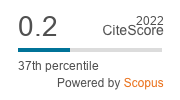Are the human embryo, the child with anencephaly and the patient in a persistent vegetative state human persons? A rational demonstration from spontaneous movements
DOI:
https://doi.org/10.17421/1121_2179_1993_02_01_SuarezAbstract
It is demostrated that an organism which has the biological capability to become an organism of the species ‘homo sapiens’ showing spontaneous mouvements, is a human person. Hence, children with anencephaly and patients in the vegetative persistent state should be considered to be persons. Moreover, outgoing from recent embryological observations on mammals, we demonstrate the theorem that among the eggs resulting from the fusion of an ovule and a sperm, there are such that can develop until the stage of spontaneous mouvements whithout being penetrated by maternal macromolecules; only such eggs are refferred to as embryos. Therefore, preimplantation embryos (also called “preembryos”) are human persons too. Similarily, an organism of the human species that does not show spontaneous mouvements but has the neural capability to perform them, is a person (in coma state); on the contrary, a human organism that does not posess the neural capability to perform spontaneous mouvements is a corpse.



